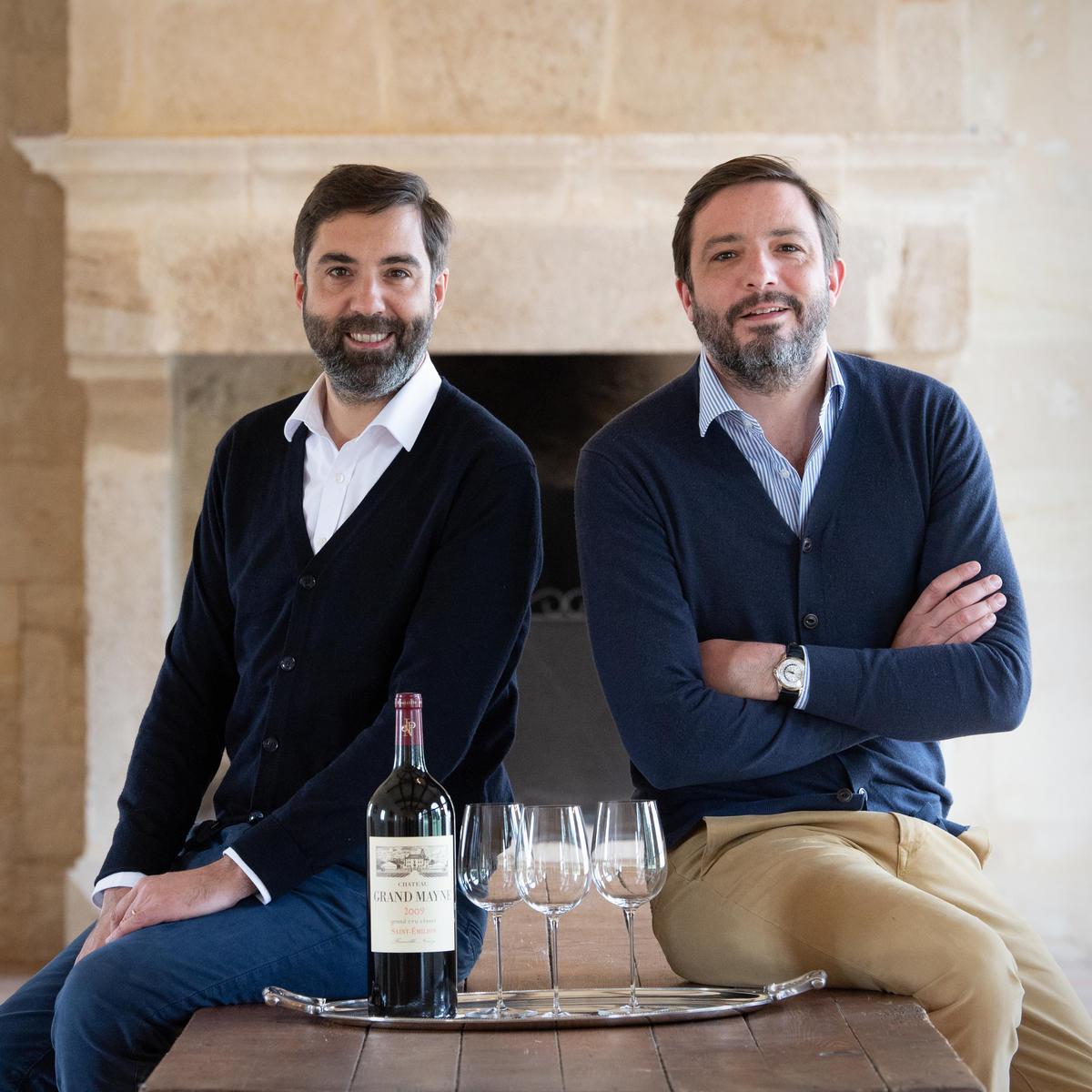Château Grand Mayne: “palpable energy”
Author: Charlie Geoghegan

At Château Grand Mayne in St Emilion, the Nony family are making wines that speak of the vineyard rather than the winery. We look at how they got here – and where they’re going.
At 42 years old, Jean-Antoine Nony isn’t sure if he qualifies as part of Bordeaux’s “new generation”. But he’s been around long enough to notice a shift. “This generation of vignerons is more precise,” he says. “We’re trying to make wines that respect their origin and their place. That’s something I didn’t hear much in Bordeaux 20 years ago. It’s not something new, but it has come back.”
This rings true at Château Grand Mayne in St Emilion, where Jean-Antoine and his brother, Damien, are the third generation of their family in charge.
The 17-hectare vineyard has remained unchanged for 300 years or so. Like the wider appellation, Grand Mayne’s terroir is varied. “It’s quite typical St Emilion because there is no ‘typical St Emilion’,” he says. The most prized part of the vineyard is a slope of limestone over clay. “My father used to call it his Romanée-Conti,” says Jean-Antoine. “It looks like a Burgundian Grand Cru.”
Jean-Antoine’s father, Jean-Pierre, died in 2001, aged just 55. “He was always open-minded, in politics and everything else,” says Jean-Antoine. “He didn’t like extremes. My brother and I have inherited that.” They also inherited their father’s love of wine. Blind tastings of wines from around the world were a fixture at Sunday dinner chez Nony. This opened Jean-Antoine’s mind to the world of wine beyond Bordeaux.
Experiences outside his native region have shaped Jean-Antoine, too. He started out at Grand Mayne in 2000, but stints making wine in South Africa, and trading wine in London, followed. Upon his return to France, he toured the country’s wine regions, meeting with influential winemakers like Jayer, Chave and Guigal, among others. Tasting widely cemented his belief that wine should taste like the place from which it has come.
But this has not always been the mantra in St Emilion, notably during Robert Parker’s most influential years. Jean-Antoine cites the 2010 vintage on the Right Bank as being “too much – of everything”. Today, restraint is the order of the day at Grand Mayne. “We’ve come back to more freshness, to be more careful during the winemaking and extraction. I’m very proud of the things we have changed.”
As recently as the 1960s, there was around 40% Cabernet Franc here. “Over time it was reduced, with new fashions and everything, to 10-15%,” says Jean-Antoine. When he took over in 2012, Jean-Antoine started a replanting programme, to be completed in 2035. “It’s based on the soils,” he explains. “If there was a good place for Merlot, I would plant Merlot. If it was more for Cabernet Franc, I’d plant that. I love Cabernet Franc for the style, but also because it’s a good challenger against the threats of today – global warming and mildew.”
The estate has been a Grand Cru Classé since 1955. In the most recent St Emilion classification, Jean-Antoine says, they just missed out on being promoted to Premier Grand Cru Classé B status. Undeterred, he has applied for promotion once again in 2022. A lot has changed since the last classification, so who knows what the near future holds? “Grand Mayne has made a huge amount of progress over the past 10 years,” says Max Lalondrelle, our Bordeaux Buyer. “The energy is palpable, and there’s a return to a more terroir-oriented wine – it’s the vines that do the talking, rather than the winery.”
This article was originally published in the 2021 Autumn/Winter edition of No.3 magazine.


